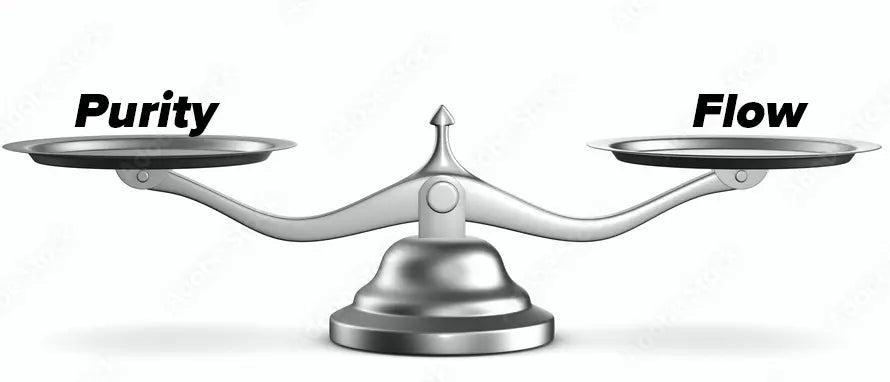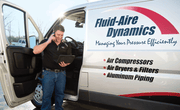
Nitrogen gas generation involves a crucial balance between purity and flow rate, with each parameter significantly impacting the other. High purity levels are essential for certain applications but require careful management of the flow rate to achieve. Conversely, prioritizing flow rate can lead to compromises in gas purity, affecting its suitability for specific uses. This blog explores how to navigate the balance between purity and flow to optimize nitrogen gas generation for various industrial needs.
The Relationship Between Purity and Flow in Nitrogen Generation
Pressure and flow are both important concepts for nitrogen generation.
When determining your nitrogen needs and sizing a nitrogen generation system, you need to first understand:
- What is the volume of nitrogen that you need to produce?
- How pure does that nitrogen need to be?
Achieving higher purity will require either a larger nitrogen generation system, more time for separation (via membrane or adsorption), or both. The same nitrogen generator can either produce higher volumes of gas at lower purities or lower volumes of gas at higher purities.
Nitrogen Flow Rate

The flow rate in nitrogen generation refers to the volume of nitrogen gas produced or delivered by the generation system per unit of time. It’s typically measured in cubic feet per minute (CFM) or cubic feet per hour (CFH). The flow rate indicates the system’s capacity to supply nitrogen gas to meet the demands of specific applications or processes that require nitrogen.
Nitrogen Purity

In the context of gas generation, nitrogen purity refers to the concentration of nitrogen in the produced gas, indicating how much of the gas is pure nitrogen compared to other gasses present. It is usually expressed as a percentage, with higher percentages indicating a greater concentration of nitrogen.
Nitrogen makes up about 78% of the Earth’s atmosphere by volume. Membrane and PSA nitrogen generators work by separating the nitrogen from oxygen, carbon dioxide, and other trace gasses and impurities in atmospheric air. Depending on the process and the system parameters, onsite nitrogen generators can achieve purity rates between 95% and 99.999% or even higher.
Balancing Flow vs. Purity in Nitrogen Generation
The relationship between flow rate and purity in nitrogen gas generation is inherently a tradeoff due to the limitations of the separation technologies used and the physics of gas separation.
Read more: How Does a Nitrogen Generator Work?
That’s why nitrogen generators are rated for different flow rates at different purity levels; this is commonly provided in spec sheets in the form of a chart. As the purity requirements increase, the flow rate will decrease for both Pressure-Swing Adsorption (PSA) and membrane systems.
Here’s how to understand the tradeoff between flow and purity:
- Time for separation: Higher purity levels require the separation process, whether through PSA or membrane systems, to be more thorough in removing impurities. This often means slowing down the process to allow more time for the nitrogen to be separated from other gasses, which in turn reduces the volume of nitrogen that can be produced in a given period.
- Selective permeability and adsorption: In membrane systems, for example, increasing purity means selectively allowing nitrogen to pass through while other gasses are retained or vice versa. Achieving higher purity levels requires the system to be more selective, which naturally limits the flow rate of the nitrogen being produced. Similarly, PSA systems rely on adsorbent materials to bind impurities; higher purities necessitate more adsorbent material, reducing the overall flow rate.
- Energy consumption: Higher purity levels typically demand more energy per unit of nitrogen produced, as the separation processes become more intensive. This increased energy requirement can lead to higher overall operational costs for high-purity or ultra-high-purity nitrogen generation.
About Nitrogen Purity

Nitrogen purity requirements directly impact the size and overall cost of the nitrogen generation system. Achieving higher purity for a specific flow rate will require a larger, and more expensive, nitrogen generation system. Operating the system at higher purities than required for the application will drive up system costs without any additional benefits. On the other hand, for some applications, it is vitally important to maintain specific purity levels.
Purity Requirements and Applications
Purity levels can vary widely depending on the application requirements, ranging from lower purities (95% to 99.5%) for general industrial use to ultra-high purities (99.999% and above) for specialized applications like electronics manufacturing. Selecting the right nitrogen purity is crucial for ensuring the success and efficiency of the process or application. It requires a careful assessment of the specific needs, costs, and industry standards relevant to the application.
- 95-97% purity: General industrial applications where nitrogen is used as an inert atmosphere to prevent oxidation or as a blanket gas. Examples include tire inflation, fire suppression systems, and certain chemical processes where high purity is not critical.
- 98-99% purity: Applications requiring a cleaner inert atmosphere but not ultra-high purity. This range is suitable for food packaging, fermentation processes, and some metal processing applications like annealing, where oxygen levels need to be low but not negligible.
- 99.9% purity: High-purity applications where even trace amounts of impurities can affect the process or product quality. Examples include pharmaceutical or chemical manufacturing where moisture and oxygen can interfere with product quality and process efficiency.
- 99.99% purity: Ultra-high purity applications that demand minimal contamination. This level is often required in semiconductor manufacturing, laboratory research, and calibration gasses, where the presence of impurities can significantly impact the processes or results.
- 99.999% purity: Specialty applications requiring the highest levels of purity, such as in certain analytical instrumentation, electronic chip manufacturing, and processes involving highly sensitive optical and laser equipment. At this purity, even the slightest contamination can have critical consequences.
How to Determine Nitrogen Purity Requirements
Determining the appropriate nitrogen purity requirement for a specific application involves understanding the process’s sensitivity to contaminants, regulatory standards, safety requirements, and the cost implications of producing higher-purity nitrogen.
- Assess process sensitivity: Evaluate how sensitive the application or process is to oxygen, moisture, and other impurities. Higher sensitivity usually necessitates higher nitrogen purity.
- Review industry and safety standards: Some industries have specific standards dictating the minimum required purity to ensure product quality, safety, and regulatory compliance.
- Consider cost implications: Higher purity levels can significantly increase operational costs due to more energy-intensive production and advanced purification technologies. Balance the cost against the benefits of higher purity.
- Consult with equipment manufacturers: Equipment manufacturers and industry experts can provide recommendations based on extensive experience with similar applications.
Choosing a Nitrogen Generator Based on Purity and Flow

Selecting the right nitrogen generator requires a detailed understanding of your application’s specific needs for nitrogen purity and flow rate. These two factors greatly influence the efficiency, cost-effectiveness, and overall performance of your nitrogen supply system.
Here’s how to approach the selection process with these critical considerations in mind.
1. Assess Your Purity Requirements
First, identify the nitrogen purity level your application requires. Different processes demand varying degrees of purity, impacting the choice of nitrogen generator. Understanding the sensitivity of your process to oxygen and other impurities will guide you in choosing a system that can consistently meet these requirements.
2. Determine Your Flow Rate Needs
The volume of nitrogen your operations consume is just as critical. Measure your peak nitrogen usage in cubic feet per minute (CFM) or cubic feet per hour (CFH) to determine the flow rate you need.
Remember, achieving higher purity levels for a given flow rate will require a larger overall system. Check the spec sheets for the nitrogen generator to determine its max flow rate at the purity levels required.
3. Consider the Type of Nitrogen Generator
With your purity and flow rate requirements in hand, you can now consider the type of nitrogen generator that best suits your needs.
Read more: PSA vs. Membrane Generators
- Pressure swing adsorption (PSA) systems: Ideal for a wide range of purity levels, from 95% to 99.999%. PSA systems can be designed to meet various flow rate requirements and are ideal for high purity/high flow applications.
- Membrane nitrogen generators: Best suited for applications requiring nitrogen purity levels between 95% and 99.5%, though higher levels can be achieved in some cases. These systems are valued for their simplicity and lower operating costs but are best for lower purity and/or flow applications.
4. Evaluate Cost vs. Benefit
Higher purity and flow rates can increase the cost of nitrogen generation. It’s essential to evaluate the return on investment (ROI) of meeting your specified purity and flow rates. Consider both the initial capital expenditure and the ongoing operating costs, including energy consumption and maintenance.
5. Future-Proof Your Choice
Consider future expansion or changes in your process that may affect your nitrogen requirements. Opting for a system that offers some flexibility in adjusting purity and flow rates can save significant costs and downtime in the long run.
Need Help Understanding Purity and Flow?
Fluid-Aire Dynamics can help you evaluate your application requirements, determine the best type of nitrogen generator for your needs, and size and configure your system for optimum performance and energy efficiency. Talk to a nitrogen specialist today.
